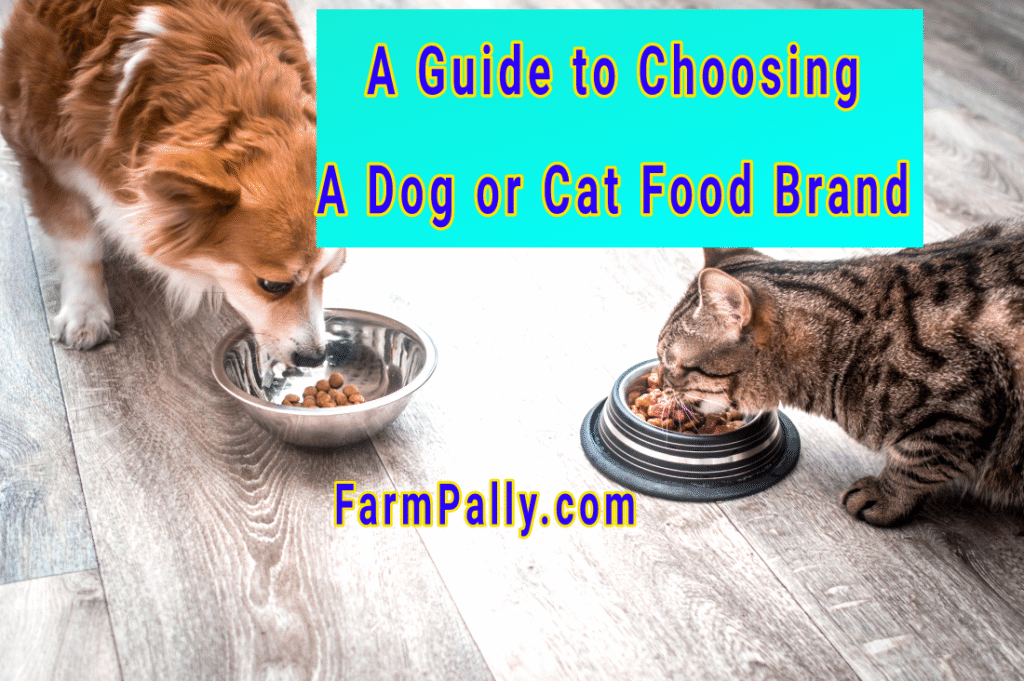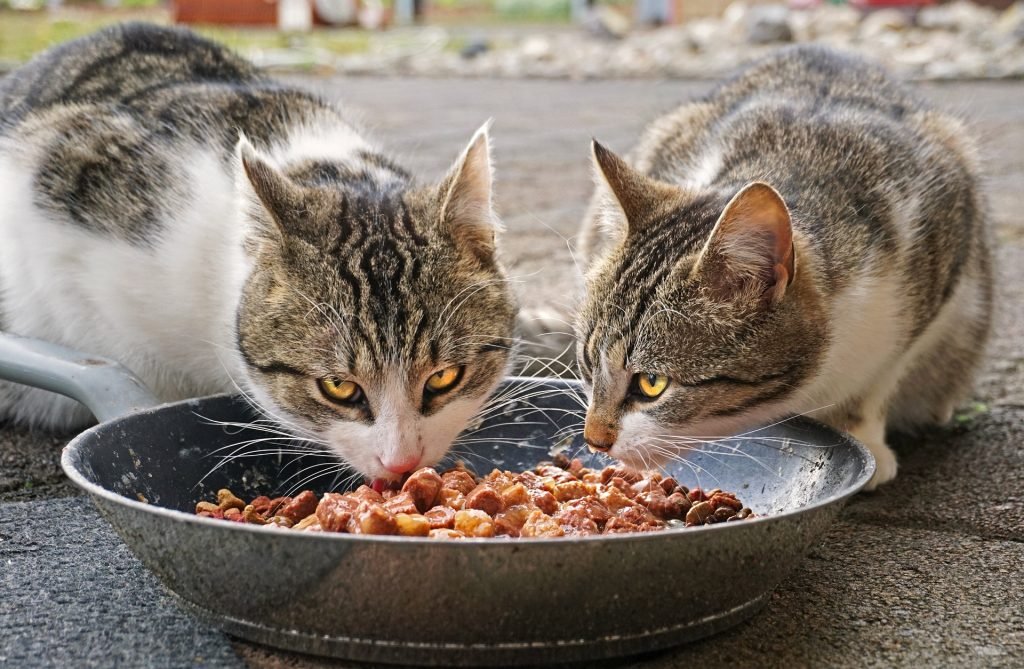Many dog and cat parents treat their pets as a part of the family, thus wanting to give the best food and care.
There are hundreds of dog and cat food brands in the market today, and thousands of food varieties, making it difficult to choose the best for your companion.
Choosing the right dog or cat food is not only about satisfying their taste, food is medicine to pets.
Offering the right diet helps their growth, supports their immune system, organ functions, gut health, skeletal framework, skin and coat.
While the wrong diet causes a nutrient imbalance, and can flip these health benefits.
Branding Factor
People are more likely to go for popular pet food brands than the rising brands.
The top brands have wider networks, the foods are available in all pet food stores, they have more customers, and are more talked about.
They are mostly better off with marketing, packaging, and others but does brand matter in quality pet food? Absolutely not!
Cost Factor
Good things don’t always come cheap! But if it’s more expensive, does it mean it’s of higher quality?
No! The most expensive pet food is not always the best, and if you have a limited budget, you may still get something good for your feline and canine friends.
Cost should not be a decisive factor when choosing the best food. You should check the ingredients, that’s what matters to your pet’s health.
Premium dog and cat foods often contain high-quality ingredients and are processed with your pet’s care in mind.
While a quality formula can be more expensive when you’re buying it, it can save you money on vet bills for disease diagnoses and treatment.
If you choose the cheapest product, you can end up paying more long-term due to recurring health issues.
Having said that, buying a pet food with a premium quality label without understanding ingredient quality or matching a diet to your pet’s needs won’t guarantee safe health for your companion.
You should value brand transparency, feeding trials, quality ingredients, and digestibility more than premium cost.
If you’re on a low budget and don’t want to harm your dog or cat, you can rotate between a premium brand and a less costly formula with core ingredients that are clearly stated, and use toppers sparingly.
Importance of ingredient quality
Before you purchase any pet food, the first thing is to check the suitability – the kind of dog or cat it is formulated for – age, size, and health.
The next thing is the nutrient profile. Brands often use vague terms to not reveal much information about the ingredients used.
Personally, I prefer brands that list named, specific ingredients used rather than vague terms.
Vague protein sources, unnamed additives, and long lists of cheap fillers are red flags for me. I can’t buy food that has a little digestible nutrition for my pets.
Having named protein and whole food carbohydrate sources like chicken, turkey, fish, lamb meal, brown rice, oats gives you an idea of what you’re offering your dogs and cats, rather than hiding variability with terms like meat by-product or animal digest.
A friend reported that his Maltese dog, Lilly, was having stomach upset with the new food he transitioned to, and advised him to change the food.
After he switched to kibbles with clearer higher-quality protein and carb sources, the issue stopped, and digestibility and nutrient absorption improved.
I advise pet parents to avoid bulky foods as they contain fillers, though they may be cheaper, but not good for your cat’s gut health.
I don’t joke with fats, and omega fatty acids for both dogs and cats, you shouldn’t too.
Omega-3 fatty acids are an important ingredient in pet food. Both EPA and DHA help nourish and improve skin and fur.
They also support joint health, the immune system, and help reduce inflammation – a trigger of many illnesses in dogs and cats.
Lack of omega-3 acids in diets can cause itching, and dull coats.
Understanding the ingredient list and guaranteed analysis
Understanding the food label matters a lot in choosing the best food for your dog or cat.
On the label, ingredients that form the larger proportion of the food are first listed, and the ingredients that have been steamed are listed below.
The guaranteed analysis shows crude protein, fat, fibre, and moisture percentages.
In one of my articles, I discussed the comparison of dry-matter basis in kibbles with different moisture content in wet foods. This conversion is important for pet owners.
Shun formulas with long lists of additives, preservatives, and fillers near the end of the label.
While they can be harmless, they’re a pointer to heavy processing or palatability manipulation, and you wouldn’t want that.
Choose foods whose label shows an AAFCO feeding-trial statement, which keeps you and your pets in a safety net.
What is special about special diets?
Special diets are formulated for pets with certain issues or to prevent them, such as allergies, kidney problems, obesity etc.
To reduce certain issues, should you opt for grain-free or raw diets?
Both are good, and also come with risks.
If your dog is having grain allergies, which is rare though, you should choose a grain-free formula or opt for formulas with a higher protein profile.
Raw diets offer fresh nutrients and high digestibility but can easily be contaminated by Salmonella bacteria for dogs.
Limited-ingredient diets are given to pets suspected of having food allergies or digestive issues.
Interestingly, many dog owners claimed there was an improvement in their allergic dogs after switching to a special diet, and some, experienced illness, after trying homemade recipes.
Why does digestibility matter more than the numbers on the label?
Your dog or cat food could have 30% protein, and your pet isn’t getting the adequate protein needed.
Digestibility matters more than the number. How much your dog/cat actually absorbs is the main point.
You could have 2 food brands that both list 30% protein, yet one gives your dog far more usable amino acids because the protein source and processing preserve that nutrition.
What you need to do is to monitor your pet’s stool and see if it’s small and firm.
Highly digestible food leads to small stools because the nutrients are better absorbed.
On the other hand, poorly digestible foods lead to nutrient loss, therefore, more stool, cause gut irritation, and lead to poor growth.
If you transition into a new food properly, and your pet is not having much interest in it, it may be a signal that the new food is low in quality.
You should monitor the stool quality and frequency, changes in coat, weight and physical activities closely.
Softer stools, higher stool frequency, intermittent vomiting, rough coat, weight loss, itchiness or recurrent ear infections, and clear signs of poor diets, wrong food choice, and you need to act fast by changing the food.
Should you care about nutritional adequacy?
Yes, it matters! Nutritional adequacy means the food meets the nutrient requirements for the healthy growth of a pet’s life stage.
It is important to know that your dog or cat is getting what’s needed for their growth.
However, nutritional adequacy only means the recipe meets the minimum nutrient requirement for the life stage.
Again, some foods only meet the nutritional adequacy on paper, they have not gone through trials whereby pets get healthier after eating them.
Therefore, choosing feeding-trial-tested foods is a wiser decision, as it gives more assurance of real-life response when you offer it to your companion.
Switching food and transition
Switching foods for both cats and dogs can go wrong if not done carefully.
Switching to a higher quality food can cause stomach upset, vomiting, and diarrhoea regardless.
A rule of thumb is the 25%:75% – 50%:50% – 75%:25% – 100% new and old formula mix for 10 days if you want to switch to a new food.
If you feed your pet 2 cups of food at a serving, add a half cup of the new food with 1.5 cups of the old food, and mix together before you put it in his bowl. Repeat it on the second day.
On the third day, mix 1 cup of new food with 1 cup of old food, and do this for 2 days again.
Continue like this till you switch to a new food. While switching, don’t introduce new treats at this time so you can know what causes symptoms if they occur.
Introducing new food overnight can overwhelm your cats’/dogs’ gut microbiome and enzymes, leading to vomiting, loose stool, lethargy, and loss of appetite.
If you see persistent symptoms such as loose stool after 2 weeks of transition, you should revert to the old food or consult your vet.
If symptoms such as bright red or black stool, constant vomiting, fatigue, and loss of appetite occur when you follow the above-mentioned switching formula, you should revert to the old food completely, and speak with your veterinarian.
Don’t ignore life stage, size, and activity level when choosing foods
Feeding the same quality kibble to a 1-year-old Labrador and Chihuahua may sound right, but not a good decision.
An indoor cat does not have the same activity level as an outdoor cat, therefore, it should not be fed an equal amount of kibbles despite the same age.
Similarly, active working dogs need denser calories and different fat profiles than sedentary house pets.
Small-breed puppies need more calories per pound and different ratios of calcium and phosphorus for safe growth.
Giant-breed puppies on the other hand need controlled calorie and calcium intake to prevent too-rapid growth and joint issues.
Small breeds often require smaller kibble and more calorie-dense formulas.
When you feed your pet a wrong life-stage formula, you risk skeletal problems in large-breed puppies, obesity and diabetes in sedentary adults, and poor energy for active pets.
Dogs or cats should be fed according to their size, age and functions.
Recalls are a good pointer
Recalls can happen for different reasons. It could be contamination, reduced ingredient quality, foreign objects in the formula, or errors.
Most brands tend to prevent recalls as it’s a red flag to pet parents and often erodes brand trust.
You should avoid foods with multiple recalls. I prefer foods with no recalls, but it’s more important to check the reason for the recall rather than avoiding a food product because of its recall history.
Conclusion
Choosing a dog or cat food brand for your dogs and cats respectively isn’t a simple task, there are various factors you need to consider.
When you want to try a new food, here’s a take-home to guide you.
Read the label, look for AAFCO statements or feeding-trial adequacy statements.
Make sure the ingredients used are clearly stated.
Ensure you choose foods with protein first, an appropriate fat source, and whole-food carbs.
Find out if the ingredients are sourced locally and grown naturally.
Confirm the guaranteed analysis and consider the food digestibility.
Look up recall history, brand responsiveness to issues, and customer feedback on the product.
Following this guide can save you time, cost, stress, and help your dogs and cats live happy and healthy lives.

Growing up in a family deeply rooted in agriculture, I developed an early passion for cultivating the land, caring for animals, and exploring sustainable ways to improve farm productivity.
I’ve worked extensively across multiple areas of agriculture, food and cash crop cultivation, poultry farming, fish farming etc.
At FarmPally, I enjoy sharing practical insights drawn from real-life experiences to help farmers, pet owners, and agriculture lovers make informed, and sustainable decisions.


